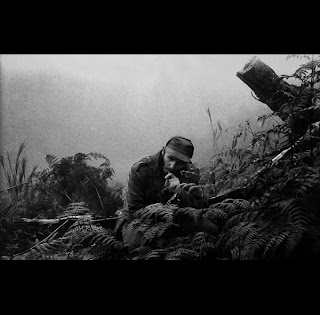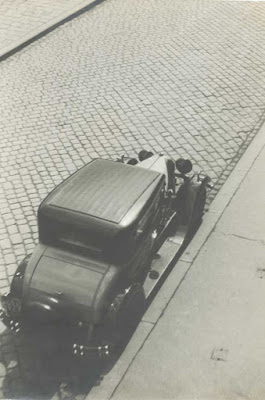
Olga Desmond (born Olga Sellin 2 November 1890 in Allenstein in East Prussia (now Olsztyn, Poland); died 2 August 1964 in Berlin) was a German dancer and actress.
Olga Desmond studied drama and earned her living as a model for artists and painters in Berlin. In 1907 she joined a group of artists and appeared as Venus during the group’s nine-month tour at the London Pavilion where they put on “plastic representations.” In Berlin she co-founded the Association for Ideal Culture and gave shows called “living pictures” in which she posed after the manner of ancient classical works of art. These so-called “Evenings of Beauty” (Schönheitsabende) were prohibited on more than one occasion starting from 1908, because the actors usually posed nude or wearing only bodypaint.
The “heroine of living pictures,” Olga Desmond became one of the first to promote nudity on the stage in St. Petersburg, Russia, when in the summer of 1908 the German dancer arrived there with her repertoire of performance. Olga Desmond’s Evenings of Beauty quickly became the subject of a great debate in the Russian media. At least one of the representatives of official “justice” wanted to haul Desmond into court for “seduction.”
Olga Desmond herself persistently defended her right to appear naked. “Call it daring or bold, or however you want to describe my appearance on the stage, but this requires art, and it (art) is my only deity, before whom I bow and for which I am prepared to make all possible sacrifices,” she told the Russian press. “I decided to break the centuries-old heavy chains, created by people themselves. When I go out on stage completely naked, I am not ashamed, I am not embarrassed, because I come out before the public just as I am, loving all that is beautiful and graceful. There was never a case when my appearance before the public evoked any cynical observations or dirty ideas.”
Asked whether a stage costume would interfere with her, Olga Desmond answered: “To be completely graceful in a costume or even in a tricot is unthinkable. And I decided to throw off this needless yoke.” Objecting to the claims that she excites “base instincts” of the public, the dancer said: “I purposely set a high admission charge for my shows so that the street would not get in, for it has little understanding of pure art, but so that people with broader demands for it would come, people who will look on me as a servitor of art.”
The authorities in St. Petersburg paid little attention to the explanations offered by the dancer from Berlin, and her first appearance in the imperial Russian capital was also her last: further shows were forbidden by the mayor. Many artists in the capital took the side of the authorities. For example, Konstantin Makovsky sharply denounced what he called the “cult of the naked body,” saying that “beauty, like much else in life, must have its hidden secrets, that we don’t even have the right to expose.”
Olga Desmond was no less the subject of controversy in her own country. In 1909 her appearance in the Berlin Wintergarten was the cause of such a scandal that it became a subject of discussion even in the Prussian State Assembly. But “scandalous” also meant well-known, and as a result of her renown, there were cosmetic products that carried her name. She traveled through Germany on numerous tours until 1914, when she married a Hungarian large landowner, and went off with him to his estate.
From 1916 through 1919 she appeared in various films including Seifenblasen (Soap Bubbles), Maria's Sonntagsgewand (Maria’s Sunday clothes) and Mut zur Sünde (Courage for sin). In the latter film she played opposite the later well-known German actor Hans Albers. In 1917 she separated from her husband and returned to the stage. Her first appearance took place on 15 April 1917 at the Theatre of the Royal University (Theater der Königlichen Hochschule) in Berlin. In the same year she appeared in a performance of Carmen in Cologne. She presented dance evenings and other things in Warsaw, Breslau (now Wrocław), and Kattowitz (now Katowice).
Thereafter, she made fewer public appearances and from 1922 devoted herself entirely to teaching. Among her best-known students was Herta Feist, who later became a member of the dance group of Rudolf von Laban.
After the First World War she married her second husband, Georg Piek, a Jewish businessman with a studio for stage equipment, decorations, and special fabrics. After 1933 Piek left Germany. Olga Desmond continued to manage the business.[citation needed]
After World War II, Desmond lived in the eastern part of Berlin. When the wall was built, she was unable to leave.[citation needed] In her late years, forgotten by the public, she worked as a cleaning woman. To make a living, she also sold vintage postcards and other memorabilia from her time as a renowned dancer.[1] Olga Desmond died on 2 August 1964 in East Berlin.
«Call it daring or bold, or however you want to describe my appearance on the stage, but this requires art, and it (art) is my only deity, before whom I bow and for which I am prepared to make all possible sacrifices. I decided to break the centuries-old heavy chains, created by people themselves. When I go out on stage completely naked, I am not ashamed, I am not embarrassed, because I come out before the public just as I am, loving all that is beautiful and graceful. There was never a case when my appearance before the public evoked any cynical observations or dirty ideas.»
________________________________
Su nombre artístico era Olga Desmond, aunque se llamaba Olga Antonie Sellin, Creció en el barrio berlinés de Kreuzberg, donde se ganaba la vida como modelo de artistas y pintores hasta que viajó a Londres en 1907 para escenificar a Venus en una exposición plástica. Su vuelta a Berlín dio el precoz pistoletazo de salida a los locos años 20. Fundó la Asociación para la Cultura Ideal, que celebraba las denominadas 'Noches de la belleza', unas veladas prohibidas en las que los participantes posaban desnudos y con el cuerpo blanqueado, a imagen y semejanza de las esculturas clásicas. En estos años florecía también el arte de la fotografía y Desmond se convirtió en la perfecta musa de la instantánea. Así fue como dio comienzo el arte del desnudo en la fotografía.
Su aparición data de 1870, en la Estrasburgo asediada por el ejército Alemán. Allí surgen las primeras fotografías de desnudos tal y como consta en una exposición del Museo de la Fotografía de Berlín que estudia su proliferación en postales o tarjetas. Se trata del desnudo como objeto de la fotografía, no de fotografía erótica o perversiones fotografiadas, que también son relativamente frecuentes en esa época, y demuestra que arte y desnudo, unidos desde el principio de los siglos, viven una nueva etapa en su relación con la llegada de la fotografía, que permitió a los artistas, incluso aquellos sin formación académica ni dotes plásticas, plasmar con el mismo realismo o más ese encanto que también buscaban pintores y escultores.
En 1909, el espectáculo de la Desmond como bailarina desnuda, en el Berliner Wintergarten, fue todo un escándalo y su nombre se hizo tan famoso que se utilizaba en la promoción de perfumes y cosméticos, de manera que la fotografía de su desnudo se nutrió también del empujón de la publicidad. El género cobró cuerpo, nunca mejor dicho, y ya no abandonó la historia de la fotografía hasta nuestros días.
Esta muestra, titulada 'La verdad al desnudo y otras...', nos confirma que nuestros bisabuelos no eran nada mojigatos a la hora de experimentar con la imagen del desnudo y nos descubre un hecho sociológico: con la fotografía, el desnudo pasó a ocupar un lugar en el ámbito público, una nueva fase de conciencia cultural. En cuanto el desnudo se hizo presente en la fotografía, fue producido en masa y la censura no pudo hacer gran cosa.
Tomado de una nota de
Rosalía Sánchez para El Mundo 13 de mayo 2013




























